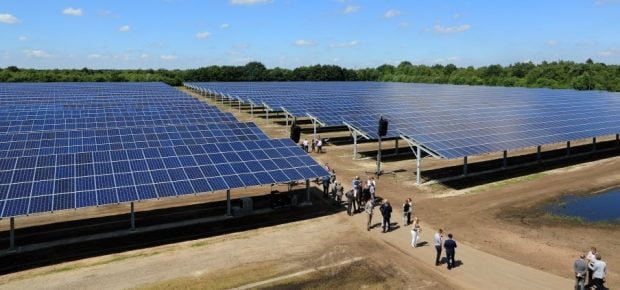UTRECHT – The Netherlands is the third fastest growing solar market in Europe. Just like last year new installations will continue to grow over 50 percent in 2019, experts say. Though Europe is reclaiming its position in the PV market, countries and companies have to adapt more quickly to the digitalisation and electrification of the energy market, for instance in mobility, they state. Now China is taking the lead.
Based on the share of renewable energy The Netherlands are being bottom of the class in Europe, but in the growing solar market they are ahead of other countries, research by IHS Market shows. “In terms of growth rate they will be the third fastest growing country in Europe in 2019, after Spain and France, and more than 2 Gigawatts of new solar power will be installed,” says Sam Wilkinson, Associate Director for the Solar and Energy Storage Research group at IHS Markit Technology.
Double-digit growth
He is one of the keynote speakers during the 11th edition of The Solar Future NL conference, on June 13 in DeFabrique in Utrecht. Wilkinson will review the most important PV market trends in 2019 and discuss international impacting trends for the Dutch market.
IHS predicts global PV installations will return to double-digit growth this year and European PV demand will return to 2012 levels, the last year the continent dominated the solar market. Though in 2018 a global milestone of 103 Gigawatts new installed PV installations was reached, it was also the first year the amount of new installations grew less than 10 percent. That was due to declining demand caused by trade disputes and policy changes in two of the three top markets: China and the United States.
Pipeline of projects
Decreasing prices and increasingly attractive economics of PV are now helping to reignite markets though, especially in Europe. “We predict a 25 percent global growth in 2019 and expect Europe to reclaim ground as a PV market. A huge pipeline of projects has been built up and with 19 new Gigawatts being installed, we predict almost 50 percent growth in Europe,” says Wilkinson.
In Spain and France, IHS Markit sees annual PV installations growing by over 50 percent. Together with Germany and the Netherlands these countries will drive 62 percent of new utility-scale additions in Europe this year.
Capital costs
Leading energy expert Gerard Reid, founder and CEO of Alexa Capital, also sees growth coming back in Europe’s solar market. “New installed solar now equals all new installed installations for wind, hydro, biofuels and nuclear. Countries like the UK, Spain and Italy had a negative growth in the past years, but 2019 will be a good year again. Governments everywhere are putting policy in place, allowing renewables to grow fast,” he says. “Although I have caution about the capital cost of PV installations. They are difficult to finance.”
Revolution
Reid is also one of the keynote speakers on The Solar Future 2019. According to him the digitalisation and electrification of the energy market is going fast and leads to new business opportunities. He compares the convergence between mobility and renewable energy with the industrial revolutions in the 18th and 20th century. Just as the steam engine combined with rail transport and oil combined with the combustion engine created great changes then, renewable power combined with electric transport is going to do so in this century.
“We are moving to an electrification and digitisation of our world which offers amazing opportunities, but is also a hugely disruptive force. Europe is blocking this change. We need to understand the change that is going on and allow entrepreneurs to grasp the opportunities. If we don’t get a grip on this we get into serious problems,” says Reid.
Electric mobility
Reid predicts electric transport will grow faster than any other expert has predicted. For instance because battery-prices, just as solar panel prices, have fallen 90 percent in the last 10 years, reducing the cost of EV’s. In China billions are raised into mobility and EV-start-ups, allowing the country to take the lead in this development. Europe has almost no battery technology and is staying behind.
In his opinion transport will be offered as a service in the future, offered by companies like Uber and its Chinese counterpart DiDi, which are switching tot electric transport rapidly. The IPO of Uber has a higher valuation than any other automobile company in the world, Reis states. “But Europe has no Uber and most of the EV’s are being built in China, allowing the country to take the lead in this technology,” he says. ,,In Europe we do a lot of research but the real value-adding is taking place in China.”
China dictates
IHS Markit research shows China is dominating the solar market. The country produces an estimated 65 percent of all PV modules and 41 percent of global installations, thus dictating the supply-and-demand balance of the industry. “If China prioritises its domestic market, this can have an enormous impact on global supply and can cause prices to go up, as we’ve seen happen in the past,” says Wilkinson.
















